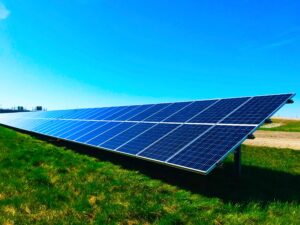If you are checking out solar panels to install a solar system then you must have come across the terms Polycrystalline Or Monocrystalline, as prominent panel options. Both of these solar panels are equipped to produce solar energy, but come with certain functional and physical differences that you should be aware of. But while making a choice, you should consider your requirement and go for the one that suits your needs. You can also look for variants that can be used with Lifepo4 batteries.

Appearance:
The solar panels have different silicon structures which affect their appearance and also the way they interact with sunlight and are perceived by the human eye. The monocrystalline cells are black and consist of a single silicon crystal. Whereas the polycrystalline cells have a bluish hue and consist of different silicon fragments cast together. Although both cells look physically different, but come with a satisfactory lifespan, whereas most solar cells come with a warranty of around 25 years.
Market value:
The cost of a solar panel depends entirely on the silicon structure used and the way it is manufactured. The polycrystalline panels are made by melting the silicon crystals and molding them and then cutting them into slices of panels. On the other hand, monocrystalline panels consist of pure and single silicon crystal, the process of manufacturing a monocrystalline solar wafer is complex and is therefore relatively more expensive than a polycrystalline solar panel. However, the additional costs consisting of labor costs, battery and inverter costs and the other protection charges are the same for both types of solar panels.
Both varieties of solar panels are efficient, but what sets them apart is the use you put them to. Efficiency depends fairly enough on your requirement, but if an external note is to be made, monocrystalline panels are slightly more efficient as it converts a greater amount of sunlight into electricity. A recent study shows that a polycrystalline solar panel typically has an efficiency of around 20% and a monocrystalline panel approaches 23%. It is clearly understandable that the difference in efficiency is small, thus explaining the cost-effectiveness ratio for both scenarios.
So the choices again come down to the requirements, to compensate for the lower efficiency of polycrystalline panels they come in cheaper varieties and can be set up in greater numbers. However, the monocrystalline, although expensive but effective, requires a smaller number of panels.
Use of monocrystalline solar panels
The monocrystalline solar panels work best in smaller areas as they are efficient in producing more electricity on a smaller scale and are able to draw maximum solar energy even in areas with lower sunlight. They are the best choice when efficiency is more important than price. Similar to other solar panels, these are also bulky, but due to the dark color they easily fade into the background. In addition, they have better heat tolerance and are therefore the best option for extremely hot environments. In short, the benefits of monocrystalline solar panels are: that they are suitable for smaller applications, work well in areas with low sunlight and are more efficient than other solar panel varieties.
Applications of polycrystalline solar panels:
Polycrystalline solar panels are the most cost-effective solution and require larger areas to produce more electricity. They require an ample amount of sunlight to work productively and are best for rural areas where they can be tucked away on the roof. The aesthetic appeal is not so good, as the blue shade can be unattractive to many. The benefits of polycrystalline solar panels are as follows: They are a highly cost-effective option, work best with maximum sunlight, and require a larger area for larger production.
Things to remember:
The main reason for switching from conventional energy methods to renewable solar energy is primarily money, followed by environmental issues and energy independence. Installing solar panels can help lower electricity bills in two ways: One way is to connect the solar grid to the conventional grid, through which the energy produced by the solar panel can be utilized through the grid. However, the other way is to connect the solar panels with a Lifepo4 batteries and inverter to directly use the converted energy and go off grid. However, when first planning to invest in a solar panel, there are certain things to keep in mind, such as the economy, space limitations, and personal preferences or requirements. Both types of panels work to produce energy and save money, but differ in many ways, so it’s still important to compare your personal requirements with the specific panel’s performance and then finalize something.
Final words:
As already mentioned, there is no conclusion on the comparisons between Polycrystalline or Monocrystalline, as both are designed to produce energy. Since both are two different products, they should work differently and generate different results. However, it is important to remember that when you choose a solar solution, you are not only trying to save on your bills, but also to take a step towards clean energy.




